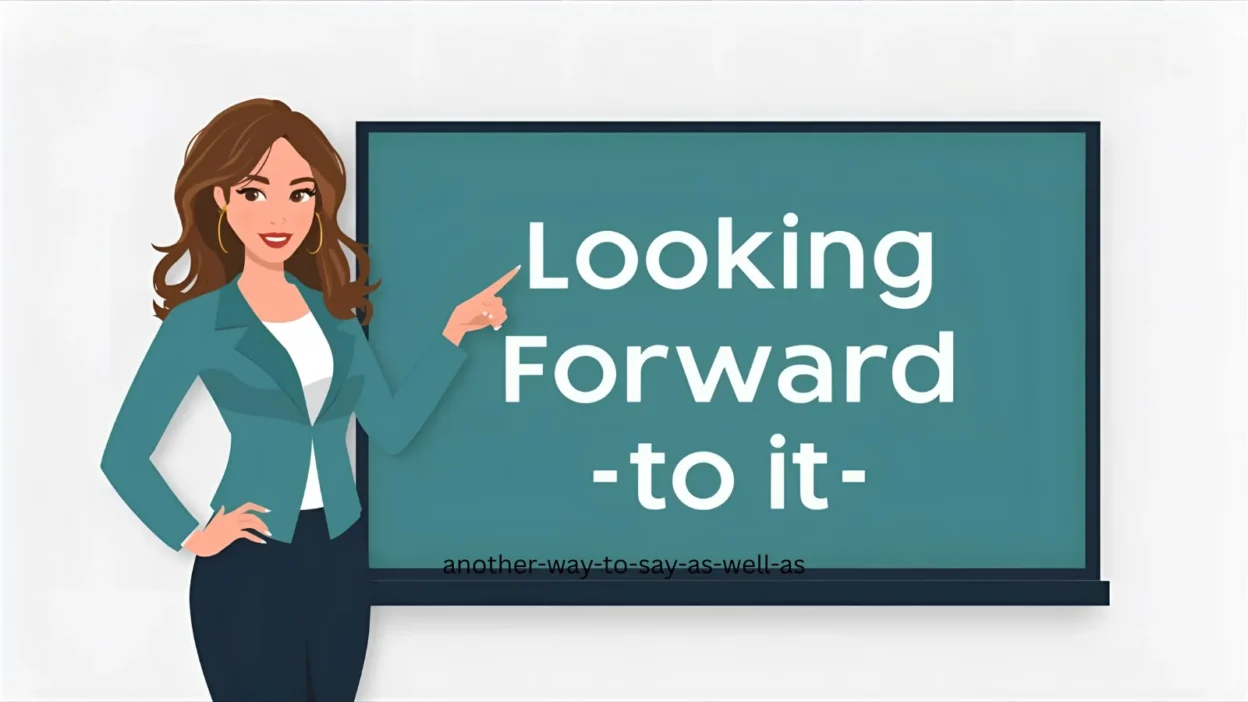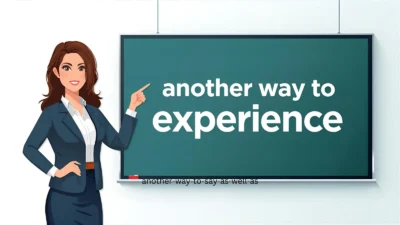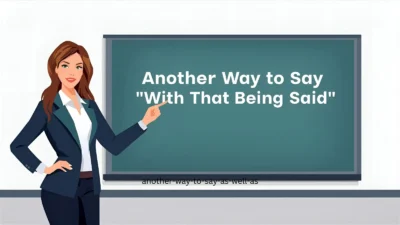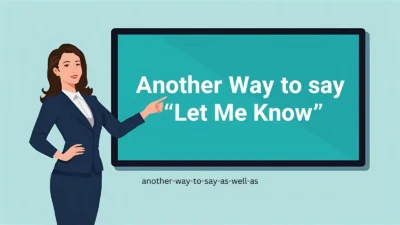The phrase “looking forward to it” is a common way to express anticipation, excitement, or eagerness for something upcoming. It’s friendly, polite, and widely accepted in professional and casual contexts. However, repeating it too often in emails, conversations, or messages can make your language feel predictable or less engaging.
That’s why it helps to have alternatives. In this article, you’ll discover 40 ways to say “looking forward to it,” each with meaning, explanation, examples, best use cases, and tone—so you can match your expression of anticipation to any situation.
1. Excited About It
Meaning: Expresses enthusiasm for an upcoming event.
Explanation: Casual yet positive phrase.
Example: “I’m excited about it—can’t wait for the workshop.”
Best Use: Informal emails, conversations.
Tone: Energetic, friendly.
2. Can’t Wait
Meaning: Shows eagerness for the future.
Explanation: Stronger, more casual than “looking forward to it.”
Example: “Can’t wait to catch up tomorrow!”
Best Use: Friends, casual messages.
Tone: Informal, enthusiastic.
3. Anticipating It
Meaning: Shows expectation for something upcoming.
Explanation: More formal than “can’t wait.”
Example: “I’m anticipating it with great interest.”
Best Use: Professional emails, formal contexts.
Tone: Formal, respectful.
4. Eager for It
Meaning: Expresses strong interest.
Explanation: Slightly formal but warm.
Example: “We’re eager for it and ready to collaborate.”
Best Use: Business communication.
Tone: Professional, positive.
5. Counting Down the Days
Meaning: Emphasizes excitement and impatience.
Explanation: Playful and casual.
Example: “I’m counting down the days until the trip!”
Best Use: Friends, family, casual writing.
Tone: Fun, informal.
6. Awaiting It
Meaning: Waiting expectantly.
Explanation: Slightly more formal substitute.
Example: “We are awaiting it with great interest.”
Best Use: Professional and academic settings.
Tone: Formal, professional.
7. Enthusiastic About It
Meaning: Shows eagerness and positivity.
Explanation: Professional yet warm.
Example: “I’m enthusiastic about it and the opportunities it brings.”
Best Use: Work emails, presentations.
Tone: Professional, uplifting.
8. Thrilled About It
Meaning: Expresses high excitement.
Explanation: More expressive than “excited.”
Example: “I’m thrilled about it and can’t wait to get started.”
Best Use: Friendly emails, conversations.
Tone: Energetic, enthusiastic.
9. Awaiting with Interest
Meaning: Polite way of showing interest.
Explanation: Adds a formal, respectful touch.
Example: “I’m awaiting with interest the outcome of your decision.”
Best Use: Professional or academic writing.
Tone: Formal, courteous.
10. Looking Ahead To It
Meaning: Future-focused anticipation.
Explanation: A subtle variation of the original phrase.
Example: “I’m looking ahead to it with optimism.”
Best Use: Business and professional writing.
Tone: Neutral, professional.
11. Excited to Be Part of It
Meaning: Expresses both anticipation and involvement.
Explanation: Acknowledges participation.
Example: “I’m excited to be part of it and contribute to the project.”
Best Use: Teamwork, collaboration.
Tone: Warm, encouraging.
12. Eagerly Awaiting
Meaning: Waiting with excitement.
Explanation: More formal than “can’t wait.”
Example: “We are eagerly awaiting the launch event.”
Best Use: Formal or semi-formal writing.
Tone: Polite, expectant.
13. Can Hardly Wait
Meaning: Emphasizes strong anticipation.
Explanation: Informal and expressive.
Example: “I can hardly wait to see you!”
Best Use: Casual conversations, personal notes.
Tone: Excited, informal.
14. Looking Forward with Anticipation
Meaning: Expresses hopeful expectation.
Explanation: A slightly more formal variation.
Example: “I’m looking forward with anticipation to the results.”
Best Use: Professional, academic contexts.
Tone: Formal, polite.
15. Enthusiastically Awaiting
Meaning: Shows both excitement and patience.
Explanation: Stronger than “awaiting.”
Example: “We are enthusiastically awaiting your presentation.”
Best Use: Speeches, formal emails.
Tone: Polite, formal.
16. Excited for What’s Ahead
Meaning: Positive outlook on future events.
Explanation: Combines excitement with optimism.
Example: “I’m excited for what’s ahead with this partnership.”
Best Use: Business collaborations, team messages.
Tone: Motivational, professional.
17. Glad It’s Coming Up
Meaning: Expresses happiness about timing.
Explanation: Simple and casual.
Example: “I’m glad it’s coming up soon.”
Best Use: Casual chats, friendly notes.
Tone: Light, informal.
18. Awaiting the Opportunity
Meaning: Expresses readiness for a chance or event.
Explanation: Common in professional writing.
Example: “I’m awaiting the opportunity to discuss this further.”
Best Use: Job applications, business correspondence.
Tone: Polite, professional.
19. Can’t Wait to Join In
Meaning: Eager to participate.
Explanation: Friendly and inclusive.
Example: “I can’t wait to join in on the fun.”
Best Use: Social events, informal contexts.
Tone: Excited, informal.
20. Looking Ahead Excitedly
Meaning: Anticipation with joy.
Explanation: Adds extra positivity to the original phrase.
Example: “I’m looking ahead excitedly to next week’s seminar.”
Best Use: Professional yet warm contexts.
Tone: Positive, uplifting.
21. Awaiting the Chance
Meaning: Shows patience and readiness.
Explanation: Formal and polite.
Example: “I’m awaiting the chance to prove my skills.”
Best Use: Job interviews, academic writing.
Tone: Formal, respectful.
22. Excited for It All
Meaning: Enthusiasm for everything to come.
Explanation: Friendly and inclusive tone.
Example: “I’m excited for it all—the trip, the adventure, and the memories.”
Best Use: Casual and social settings.
Tone: Informal, cheerful.
23. Can’t Wait to Get Started
Meaning: Anticipation of beginning something.
Explanation: Great for professional or casual use.
Example: “I can’t wait to get started on this new project.”
Best Use: Teamwork, project launches.
Tone: Motivational, positive.
24. Looking Forward with Excitement
Meaning: Polite and positive anticipation.
Explanation: A stronger variation of the original phrase.
Example: “I’m looking forward with excitement to our meeting.”
Best Use: Professional emails, speeches.
Tone: Respectful, optimistic.
25. Ready and Excited
Meaning: Expresses both eagerness and preparedness.
Explanation: Combines enthusiasm with readiness.
Example: “I’m ready and excited for the challenges ahead.”
Best Use: Motivational, team contexts.
Tone: Confident, positive.
Conclusion
While “looking forward to it” is a polite and widely accepted phrase, using alternatives can make your language more vibrant and tailored. For casual situations, phrases like “can’t wait” or “counting down the days” work well. For professional contexts, you can use “anticipating it,” “awaiting the opportunity,” or “excited for what’s ahead.” By matching tone and context, you’ll express anticipation in a way that feels natural and engaging.



